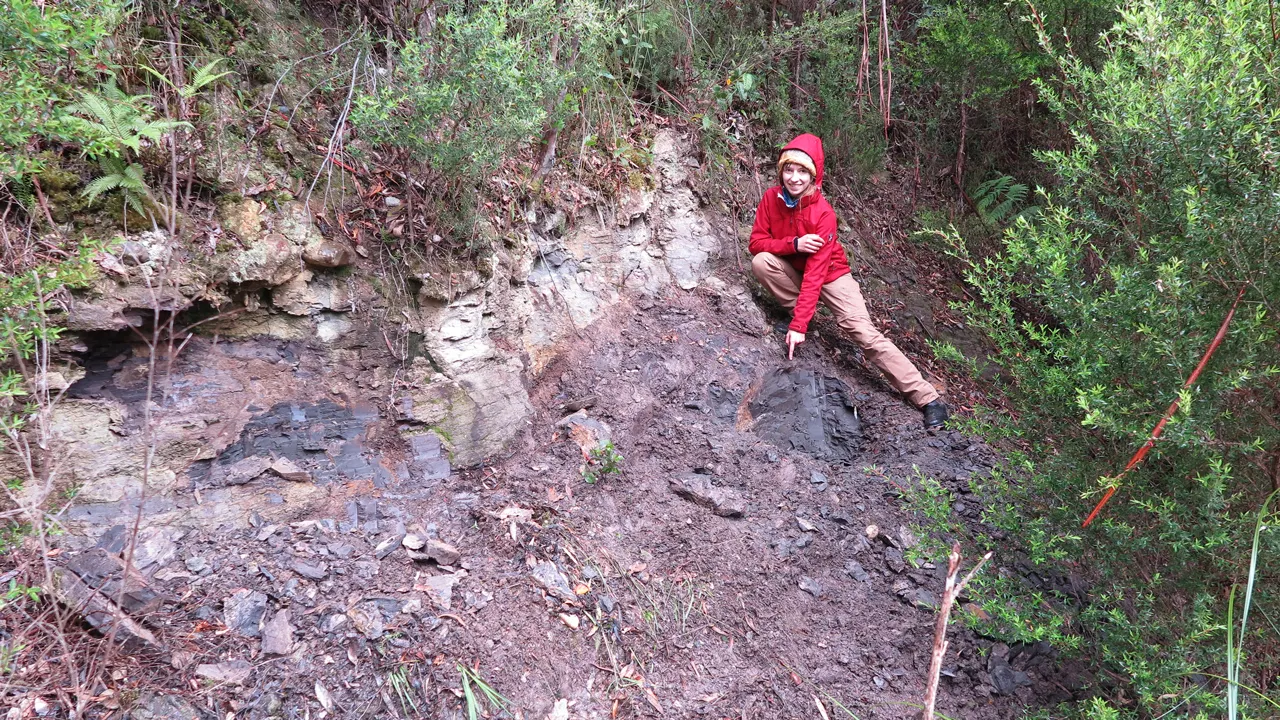A recent Ph.D. graduate’s excavation of an ancient forest near Strahan in western Tasmania exceeded expectations with the discovery of new plant species.
Fossils were discovered during a 2020 excavation led by Dr. Miriam Slodownik, a recent graduate of the University of Adelaide. The goal of the dig was to “understand the ancient ecosystems of Tasmania,” Slodownik told Fox News Digital in an email.
Slodownik’s research was published in the American Journal of Botany on Aug. 27, 2024.
“I’ve always been fascinated by the idea that regions near the poles, areas we associate with extreme cold and ice, were once covered in dense forests,” Slodownik said. “To study this, I looked for places where we could find rocks that formed during the right time and at the right place.”
MOM, SON DIG UP ANCIENT OBJECT OFTEN FOUND NEAR BURIAL GROUNDS WHILE GARDENING
“Tasmania turned out to be a perfect location, not only because it was accessible (in contrast to Antarctica, which is much harder to reach) but also because previous research had already indicated the presence of fossils,” Slodownik continued. Fossils were previously found during a 2003 excavation conducted by the University of Tasmania led by professor Gregory Jordan, Slodownik said.
Even though Slodownik had past findings on her side, the success of the more recent excavation turned out to be greater than what was previously expected.
The goal of understanding ancient ecosystems was far exceeded by also discovering new plant species along the way.
“We did not expect to find new species,” Slodownik told Fox News Digital.

Among the significant fossils found included relatives of living plants such as Araucaria, Slodownik noted, as well as relatives of the Wollemi pine, an ancient and extremely rare plant. Fewer than 100 adult trees are known to exist today.
12-YEAR-OLD BOY STUMBLES UPON STUNNING ANCIENT FIND WHILE WALKING DOG IN ENGLAND: ‘RELATIVELY RARE’
Fossils often tell larger stories about the conditions of the world around them at the time when they lived.
The forest in which these plant fossils were found dates back 53 million years, according to a news release about the find from the University of Adelaide.
“The fossils tell an incredible story. Around 50 million years ago, a lush, ‘tropical-like’ forest thrived near the polar circle. This was during a time of peak global temperatures, so much so that even regions close to the poles, areas we now think of as icy and barren, were covered in dense vegetation,” Slodownik explained.
“At that time, Tasmania was positioned at the polar circle and was still connected to Antarctica, which served as a land bridge to South America. Because of this connection, many fossil plants we found in Tasmania are quite similar to those of the same age found in South America,” Slodownik continued.

“Overall, these fossils provide us with a fascinating glimpse into how Earth’s climate and continents have shifted dramatically over millions of years,” Slodownik concluded.
Read the full article here






![Kristi Noem Reveals One of the Largest Things the DOGE Guys are Doing for America [WATCH] Kristi Noem Reveals One of the Largest Things the DOGE Guys are Doing for America [WATCH]](https://www.rvmnews.com/wp-content/uploads/2025/02/2025.02.18-10.28-rvmnews-67b460d6d177d.jpg)


![Karoline Leavitt Buries Jim Acosta With an Epic Mic Drop One-Liner [WATCH] Karoline Leavitt Buries Jim Acosta With an Epic Mic Drop One-Liner [WATCH]](https://www.rvmnews.com/wp-content/uploads/2025/02/2025.02.19-07.12-rvmnews-67b62d2ad6a68.jpg)
